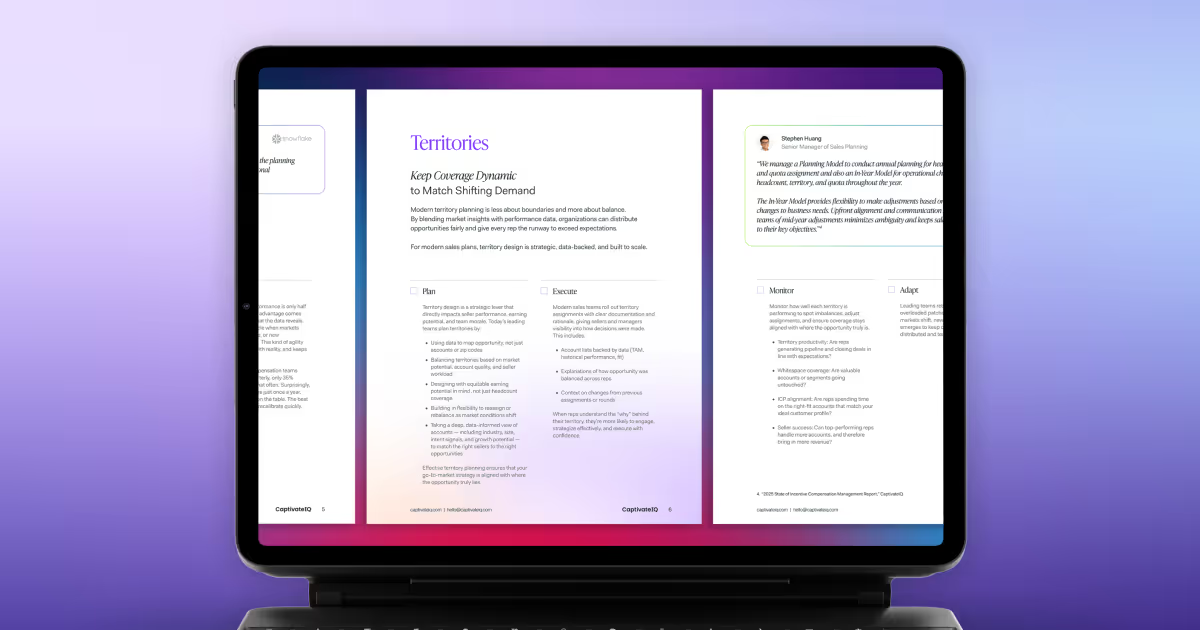Agile sales planning requires more than annual targets and static assumptions. To stay competitive, organizations need an approach where capacity, quotas, territories, and incentives function as a connected system — each one shaping the others in real time. The key is to treat every lever as an ongoing cycle of planning, execution, monitoring, and adaptation.
This checklist shows how to embed agility in each stage—planning anchored in dynamic data, execution with clear ownership and cross‑functional alignment, monitoring of early signals and performance trends, and adaptation that rapidly adjusts strategies.
By applying this cycle across all four levers, companies create a flexible framework that empowers sellers, sharpens strategy, and drives revenue growth in unpredictable markets.
.svg)







